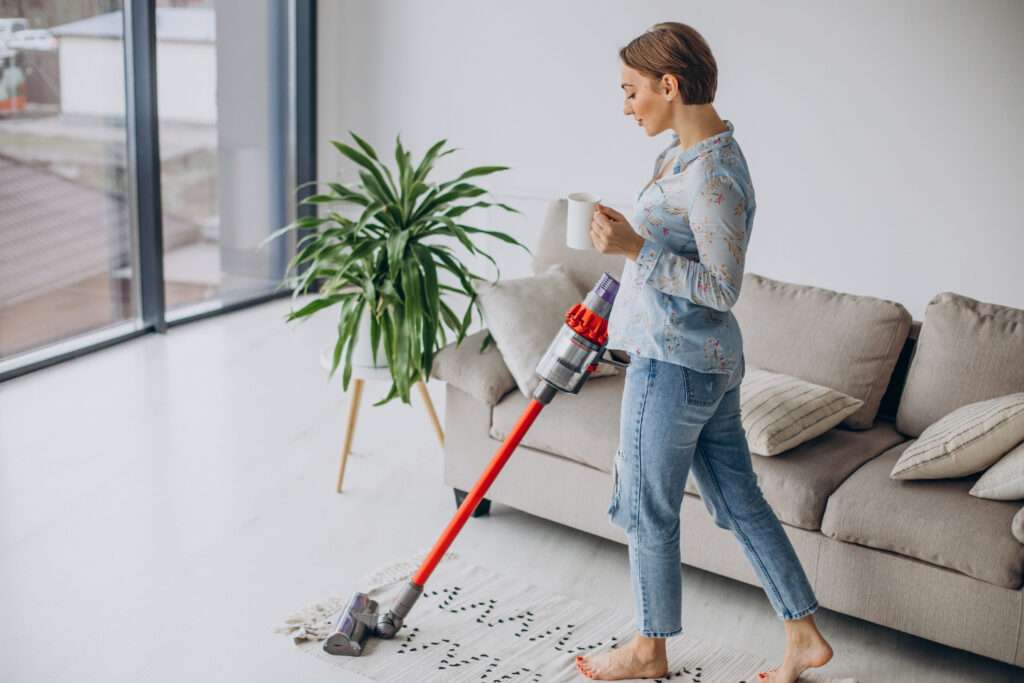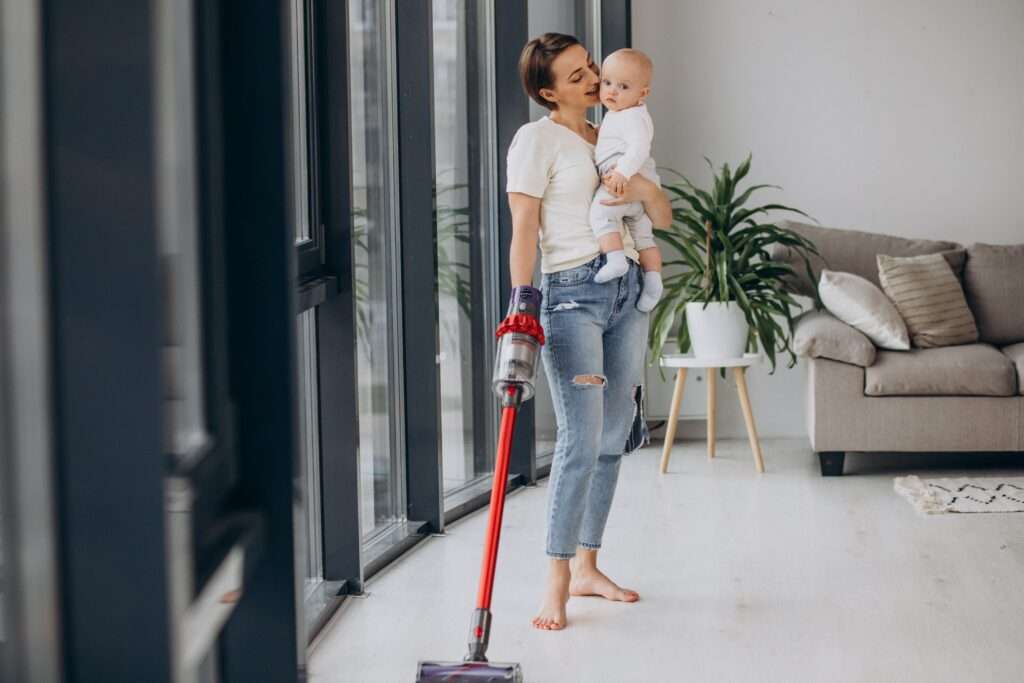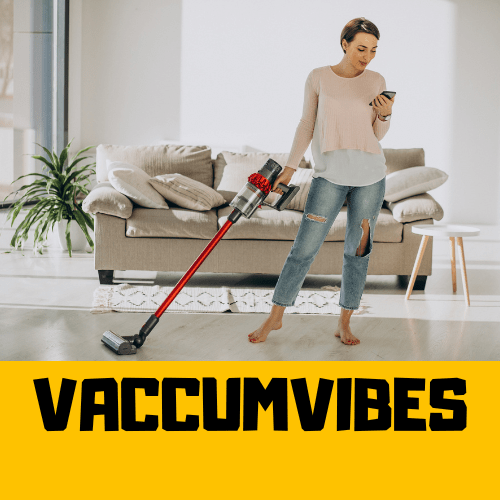
Although vacuum cleaners have been indispensable tools for enhancing cleanliness in modern households, their noise output has been annoying making cleaning enthusiasts wonder how vacuum cleaner design influences noise levels.
It has been reported that the sound pressure level (SPL) of most vacuum cleaner models available in the market typically ranges between 65 db. to 90 db. A plethora of research studies have hinted towards the fact that a well-designed vacuum cleaner is capable of reducing noise levels by 10-15 decibels in comparison to poorly designed models lacking necessary features, resulting in a serene and hassle-free cleaning experience for modern homeowners while maintaining unbeatable cleaning performance and impressive suction power.
This essay explores how vacuum cleaner design influences noise levels backed by specific model examples and statistical data. When as a modern homeowner or hygiene enthusiast you are gaining a clear idea regarding the role of design in noise generation, you can purchase quieter vacuum cleaner models, thus adding to your daily convenience and minimizing disturbance.
Table of Contents
Motor Design
When discussing how vacuum cleaner design influences noise levels, one should primarily consider the type of motor equipped in the model. Like to say for example, brushed motors, equipped in high-end models like the Dyson V7 Motorhead, generate higher degrees of noise as a result of the friction created by the brushes. On the other hand, the vacuum cleaner models that come with brushless motors, as we see in the Shark Navigator Lift-Away Professional, generate much less noise offering you a serene home atmosphere favorable for kids and elderly persons.
The benefit of brushless motors is that they don’t demand brushes, resulting in smoother operation and reduced noise levels. In addition to this, if your vacuum cleaner’s motor is directly exposed or not properly equipped with other components, it will emit vibrations and noise significantly into your living room environment causing tension among kids and elderly persons. Always opt for a well-designed vacuum whose motor is equipped scientifically to minimize vibration transmission.
Soundproofing Materials
The vacuum cleaner model bearing various types of soundproofing materials within the housing massively regulates noise levels. For example, the Miele Complete C3 Marin boasts an advanced soundproofing system to regulate noise emissions during prolonged vacuum cleaning. A plethora of statistical data from consumer reviews have hinted that vacuum cleaners equipped with soundproofing materials exhibited noise reductions of up to 10-15 decibels in comparison to models lacking such features.
The quality of insulation materials equipped inside the vacuum cleaner housing massively reduces the noise generated by the exposed motor and rushing airflow and thus if you are not a budget-conscious buyer, try to purchase vacuum models equipped with premium-quality soundproofing materials that absorb sound waves optimally, reducing the comprehensive noise emitted by the vacuum.
Airflow and Suction

The action mechanism and airflow of vacuum cleaners also add to noise generation as models like the Bissell CleanView Swivel Pet are capable of unbeatable suction power and thus multiplying noise output during regular vacuum cleaner use. On the contrary, vacuum cleaners that come with adjustable airflow settings, such as the Hoover WindTunnel Max UH30600, enable modern homeowners to customize suction levels and thus control noise levels while not compromising the cleaning efficiency.
Always remember that turbulent airflow passing through sharp turns emits strong noise, while smooth and streamlined airflow paths hinder turbulence and noise generation.
Bagged vs. Bagless Design
When analyzing how vacuum cleaner design influences noise levels, you should also consider the design of the dust collection system. Bagged vacuum cleaner models, such as the Kenmore Elite 31150, have been reported to generate less noise than bagless alternatives. In addition to this, statistical analysis of emitted noise degrees in bagged vs. bagless vacuum cleaner models has highlighted an average noise reduction of 5-10 decibels by bagged vacuum cleaner models, due to the sealed bag compartment that regulates the noise generated by the high-speed airflow and motor.
Corded vs. Cordless Design
The power source coupled with the motor design of vacuum cleaners also determines the degree of noise levels. Corded vacuum models, like the Oreck Commercial XL2100RHS, function based on direct electricity and thus emit higher noise levels during operation on the other hand, cordless vacuum cleaners, such as the Dyson V11 Torque Drive, run by drawing strength from rechargeable batteries and efficient brushless motors, function more quietly due to their motor design coupled with reduced reliance on external power sources.
Structural Design and Vibration Control

Lastly, when talking about how vacuum cleaner design influences noise levels, we should consider the comprehensive structural design of a vacuum model. Vacuum cleaner models like the Miele Blizzard CX1 Electro+ are equipped with shock-absorbing materials in addition to vibration-reducing components to eliminate noise caused by mechanical vibrations to the best possible extent.
A plethora of research studies have demonstrated that vacuum cleaners that come with advanced vibration control systems result in noise reductions of up to 10-15 decibels in comparison to models lacking such features. The quality of the construction techniques and the components used in the vacuum cleaner’s assembly regulates the degree of generated noise levels where sturdy construction coupled with tight seals hinder vibration and noise to the best possible extent.
How Vacuum Cleaner Design Influences Noise Levels-Conclusion
The engineering and build quality of a vacuum cleaner significantly control noise levels, as statistics point out that up to 80% of the emitted noise results from the vacuum’s design features. Studies have shown that advanced and efficient design modifications reduce noise by around 7-10 decibels, which nearly results in perceived noise reduction of up to 50%. The comprehensive vacuum cleaner design plays a crucial role in determining the degree of noise emitted from them.
Motor design, airflow and suction mechanisms, soundproofing materials, dust collection systems, structural design, and power sources, all collectively control the overall noise levels produced during vacuum cleaning operation. As a modern homeowner or hygiene enthusiast you should consider these design factors and opt for quieter vacuum cleaner models that will boost your daily cleaning experience and minimize disturbance in household environments to make your living rooms appealing, refreshing, and germ-free.
FAQs
Are vacuums designed to be loud?
Vacuums are not engineered to emit loud noises, but their operational components such as motor placement and airflow path significantly generate noise and vibrations up to 80% as pointed out by research. During the vacuum cleaner engineering process, the prime focus is given to increasing suction power and thus noise reduction demands effective modification to make substantial improvements. It has been reported that if manufacturers incorporate design changes cleaning enthusiasts can experience noise reductions of approximately 7-10 decibels.
What makes a vacuum cleaner noisy?
A plethora of factors contribute to the vacuum cleaner’s vibrations and noise and primarily, the motor needs a significant mention as its operation and misplacement produce sound. Additionally, turbulent airflow passing through sharp turns emits strong noise, while smooth and streamlined airflow paths hinder turbulence and noise generation. Also, not-so-good designed fan blades aggravate this turbulence, further amplifying noise. The quality of insulation materials equipped inside the vacuum cleaner housing massively reduces the noise generated by the exposed motor and rushing airflow. The engineering and build quality of a vacuum cleaner significantly control noise levels, as statistics point out that up to 80% of the emitted noise results from the vacuum’s design features.

For the past five years, I’ve been engaged as an SEO content writer, specializing in crafting engaging blog posts. My focus lies in meticulously exploring and evaluating household cleaning appliances, particularly those integrated with cutting-edge and emerging technologies.

A very good solution.